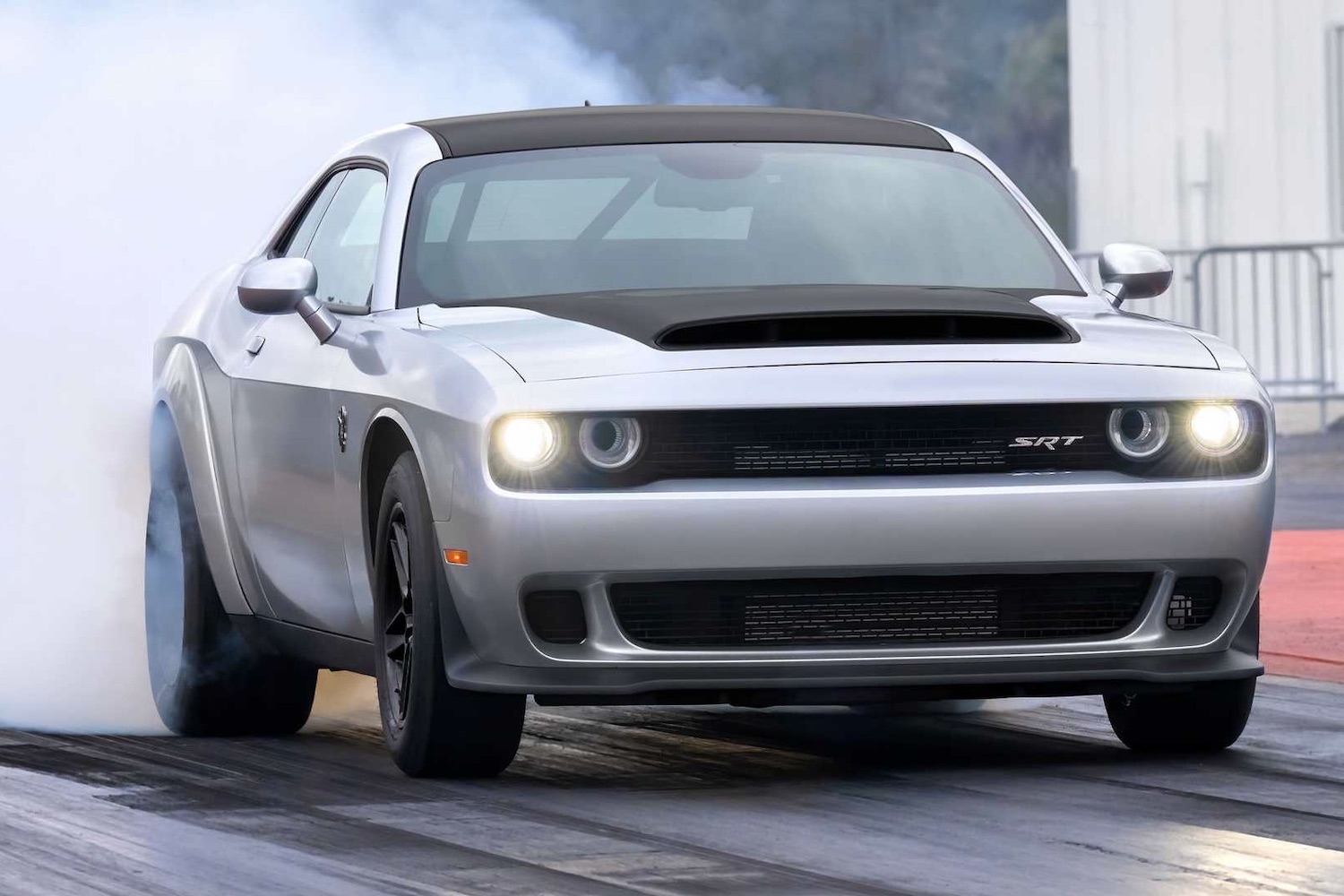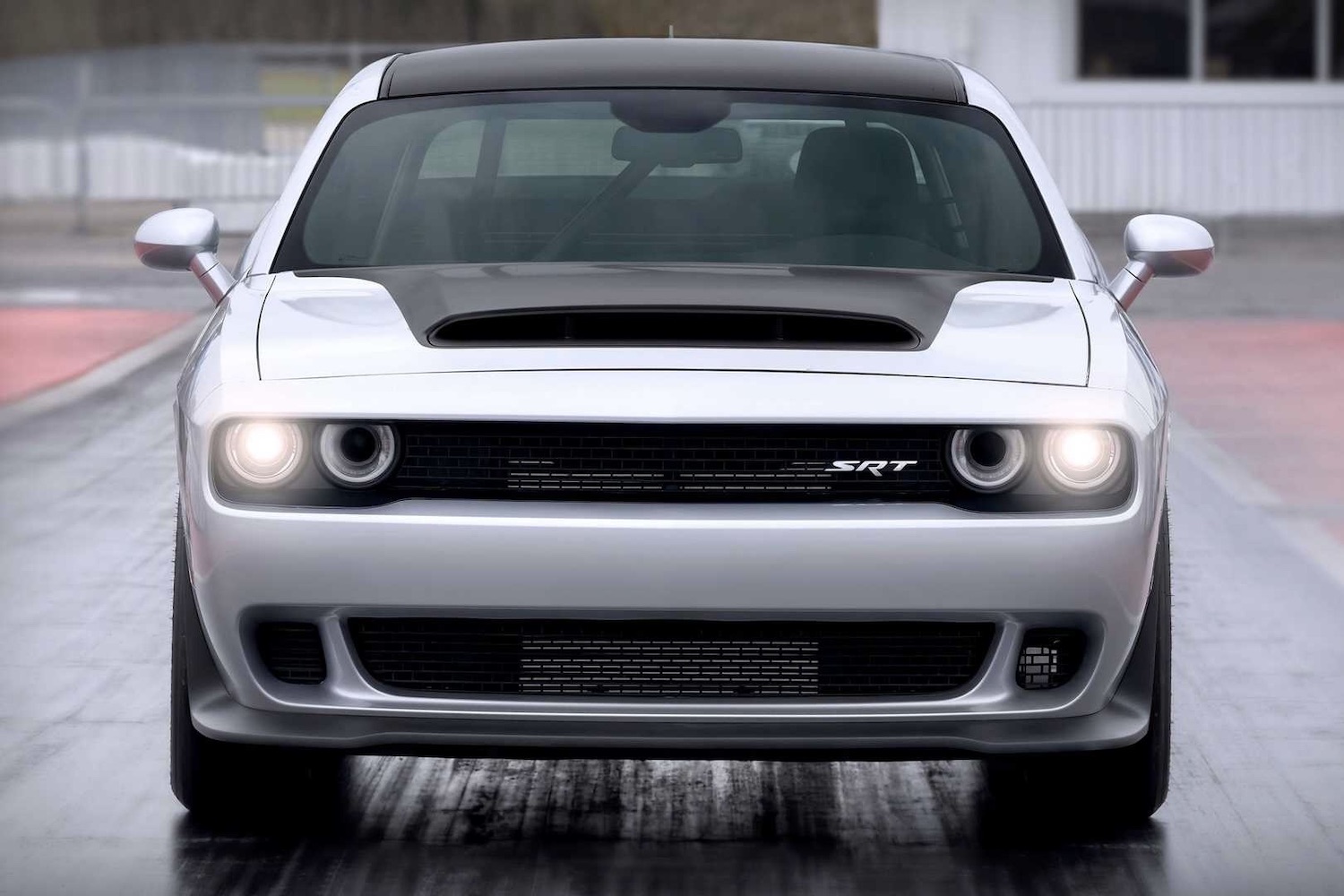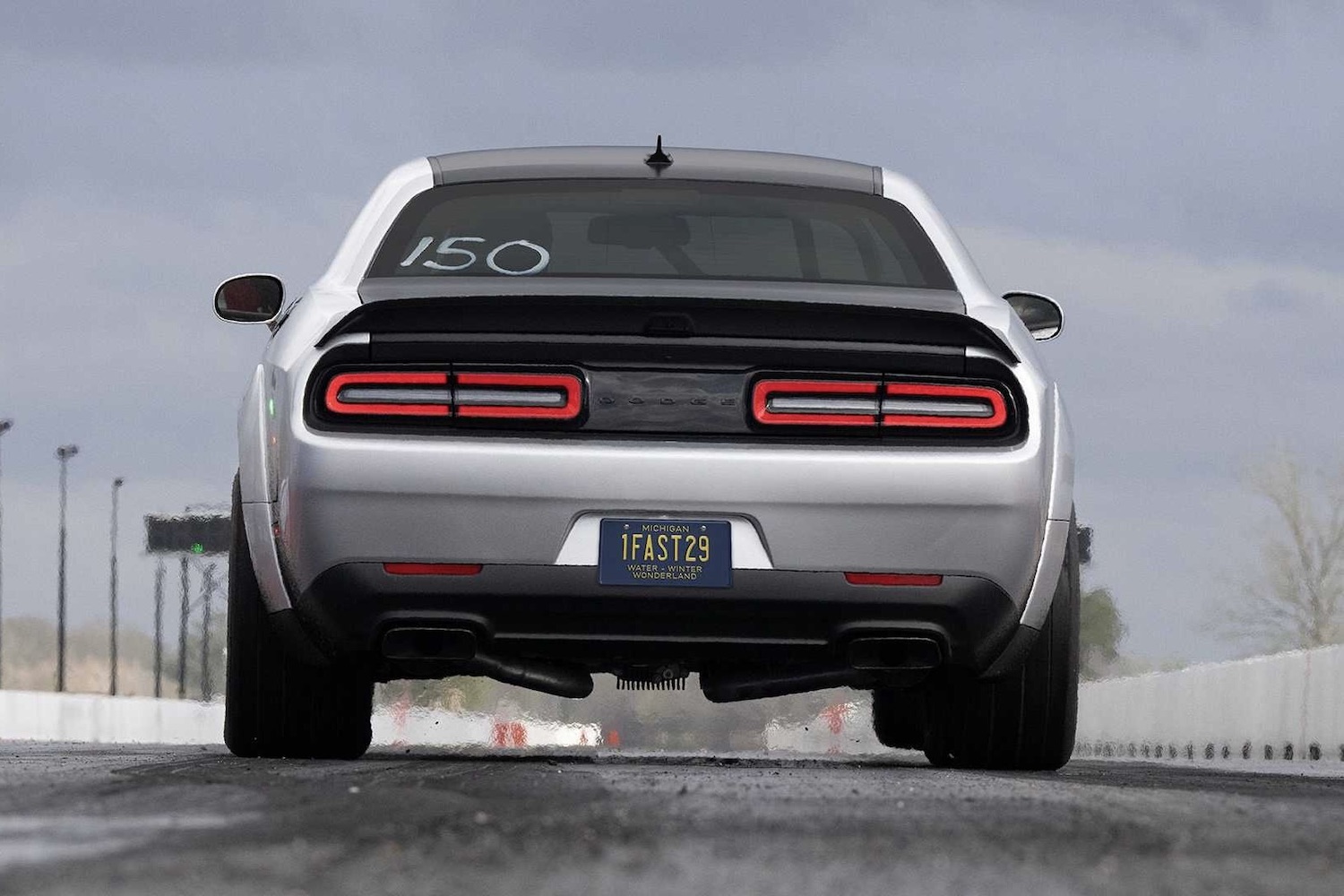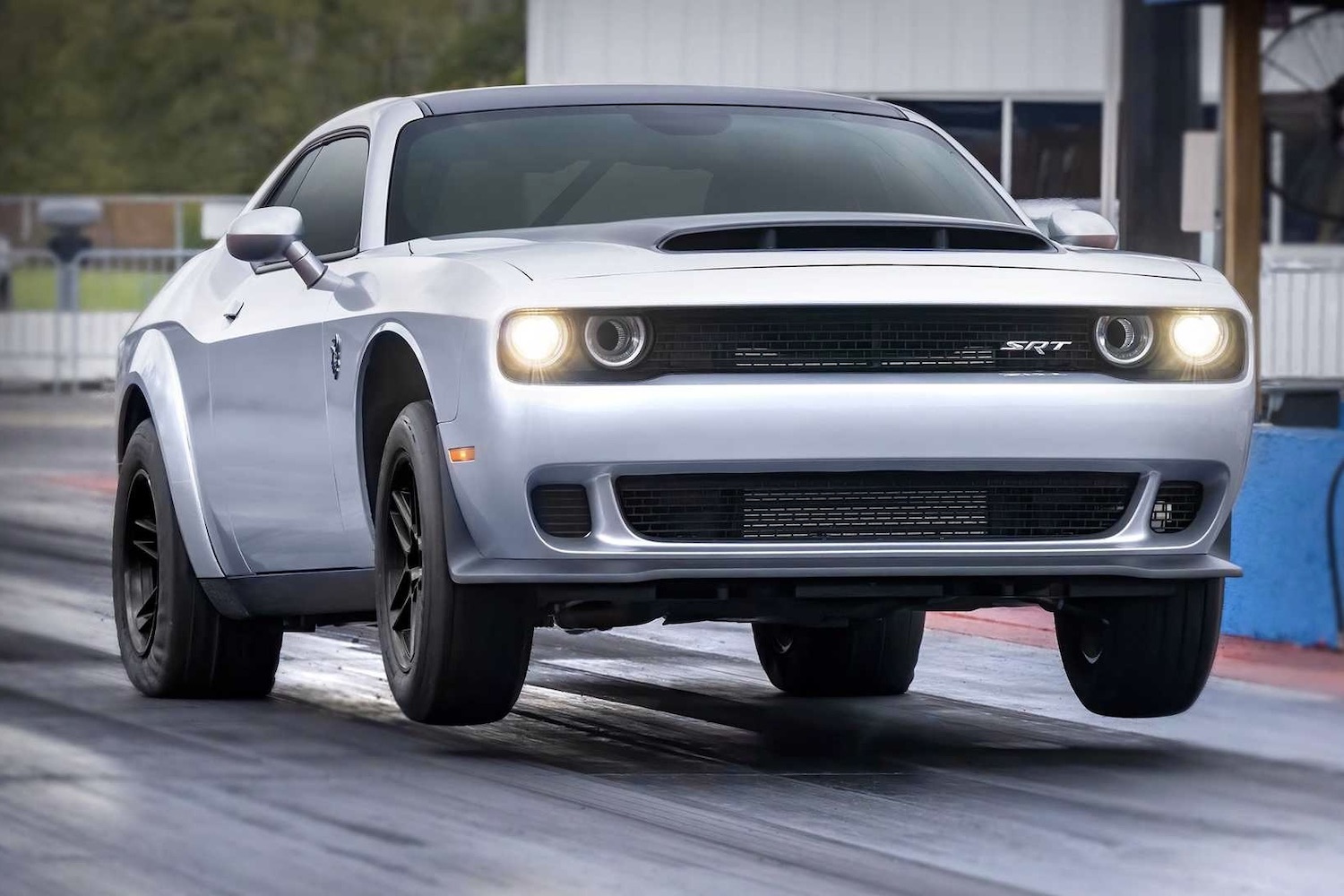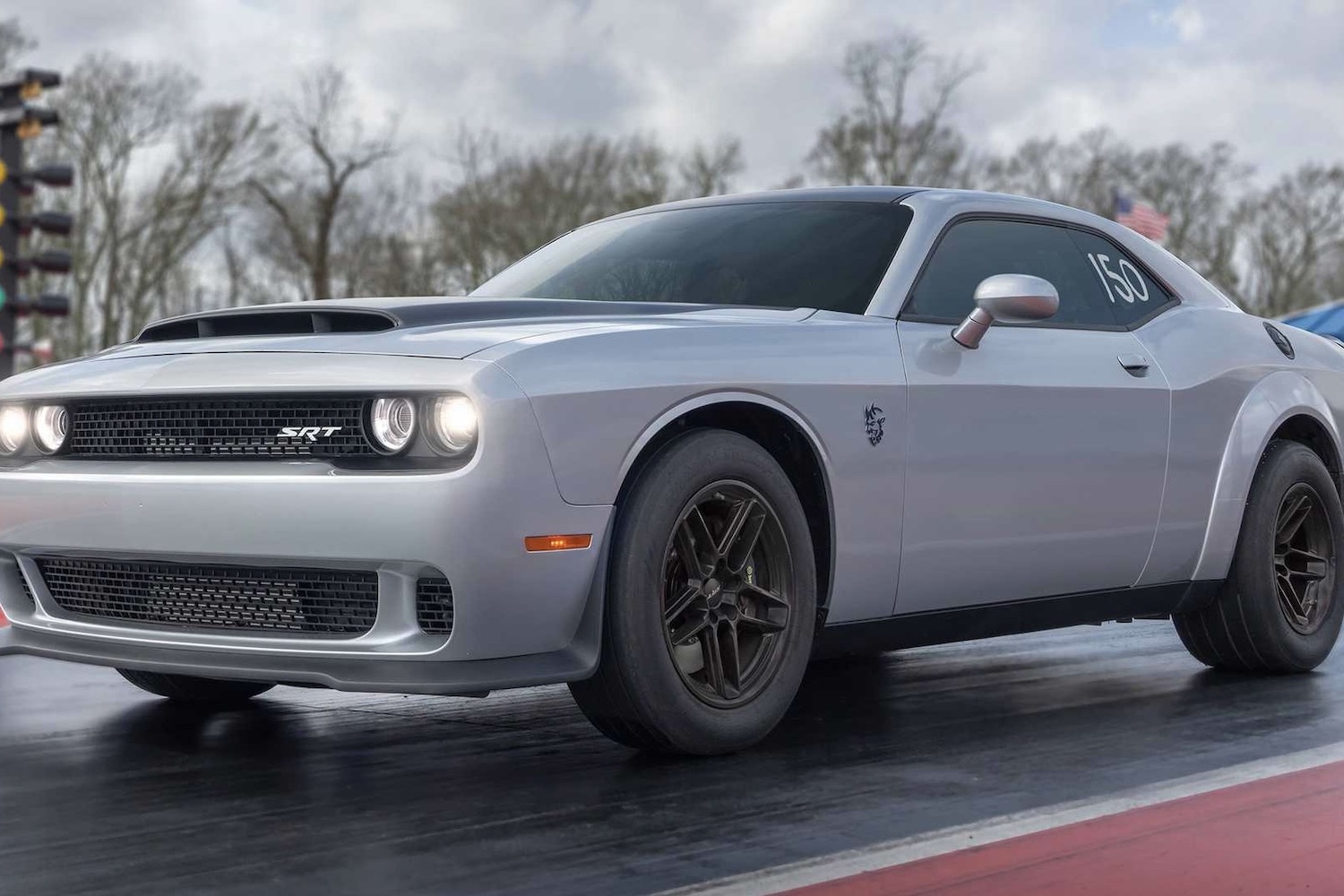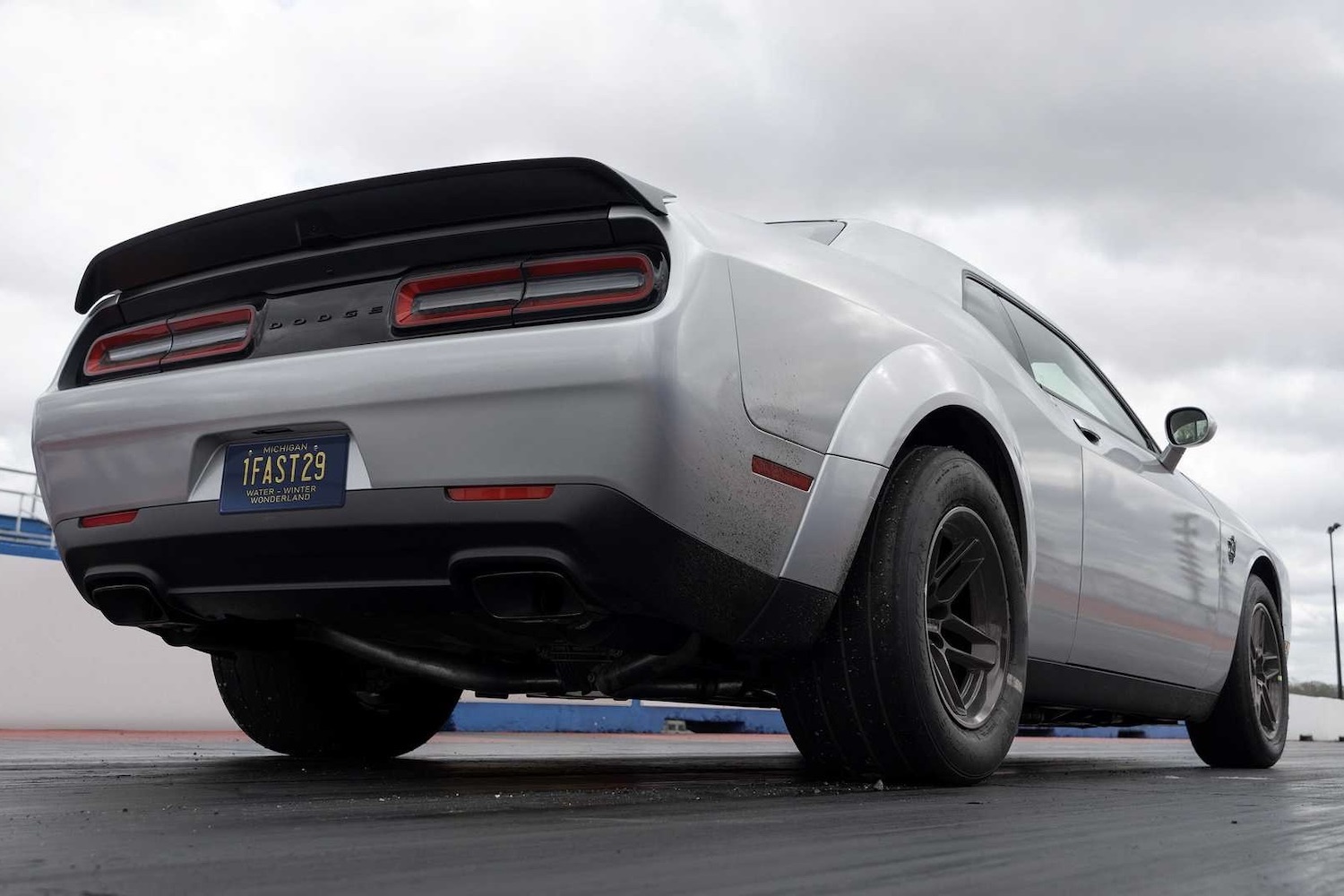The Dodge Challenger is a funny muscle car. Its arrival in 1970 made it late to compete against the likes of the Ford Mustang and Chevrolet Camaro. It didn’t have the same extensive run as the other two, and it quickly became outdated a few years after Dodge brought the nameplate back in 2008. It seemed like the Challenger was done for, but then Dodge pulled a rabbit out of a hat when it introduced the 2015 Challenger SRT Hellcat – a true muscle car with 707 horsepower from a supercharged 6.2-liter V8. Unfortunately, all good things have to come to an end. The Hellcat era is ending, and Dodge is making sure the Challenger is getting the proper sendoff with a 1,025-horsepower model.
The original Challenger SRT Hellcat was Dodge’s Iron Man for the Hellcat lineup. It paved the way for the Charger SRT Hellcat, Jeep Grand Cherokee Trackhawk, Dodge Durango SRT Hellcat, and the Ram 1500 TRX. There are so many different Hellcat variants and trims out there that Dodge might have been better off using numbers instead of names. Still, the new 2023 Dodge Challenger SRT Demon 170 is a proper sendoff to a model if we’ve ever seen one.
When Dodge announced that production of the Hellcat engine would come to an end in 2023 in November 2021 and a series of “Last Call” special edition models, we knew something big was coming for the Challenger. The final special edition has arrived, and the SRT Demon 170 is here to set the world on fire, just like the original SRT Hellcat did eight years ago.
The SRT Demon 170 is a car that’s all about numbers. To post the mega figures that it does, the muscle car comes with a supercharged 6.2-liter V8 engine – duh – that’s loosely related to the one found in the original SRT Demon. We use the word loosely because all that the engine retains from the original Demon is the camshaft. Everything else is new.
Covering everything that Dodge has changed with the V8 would take all day. The quick version of the rundown includes a larger 3.0-liter supercharger, some extra boost with the supercharger running at 21.3 psi, and a larger 105 mm throttle body. With the new components and E85 gasoline, the SRT Demon 170 produces a mega 1,025 horsepower and 945 pound-feet of torque. These are hypercar levels of power from a 15-year-old muscle car. Use 91 octane, and the engine makes 900 horsepower and 810 pound-feet of torque.
With the SRT Demon 170 on a prepped track with E85 in the tank, the muscle car can complete the quarter mile in 8.91 seconds at 151 mph. Zero to 60 mph takes just 1.66 seconds. For the people out there that love comparisons, the SRT Demon 170 will out sprint the Chiron SS, which is one of the fastest cars in the world, in the quarter-mile by two-tenths.
As one would expect, Dodge has fortified some of the SRT Demon 170’s other components to handle the power. The muscle car comes with a fortified driveline, a stronger driveshaft, an upgraded rear axle housing, and an updated differential with larger ring and pinion gears.
The drag-focused SRT Demon 170 comes with a host of features that make the muscle car a beast on the strip. The 8-speed automatic transmission has an improved transmission brake, a new TransBrake 2.0 feature that lets the driver play with more launch settings, and the suspension has been retuned to reduce wheelies. Shoppers can also fit the SRT Demon 170 with a parachute through Direct Connection.
Dodge plans to build the SRT Demon 170 in limited numbers, though it hasn’t officially nailed down those numbers yet. At the moment, Dodge claims it will build 3,000 units for the U.S. and an additional 300 models for Canada. With destination and the gas guzzler tax, the SRT Demon 170 will cost $100,361.
Production of the muscle car will start this July and will end on December 31. That means the New Year will mark the end of the line for the SRT Hellcat and brings the lineage of one of the best muscle cars to an end. While Dodge’s gas-powered Challenger is bowing out, the American automaker is looking toward an electrified future with the Charger Daytona SRT Banshee.
